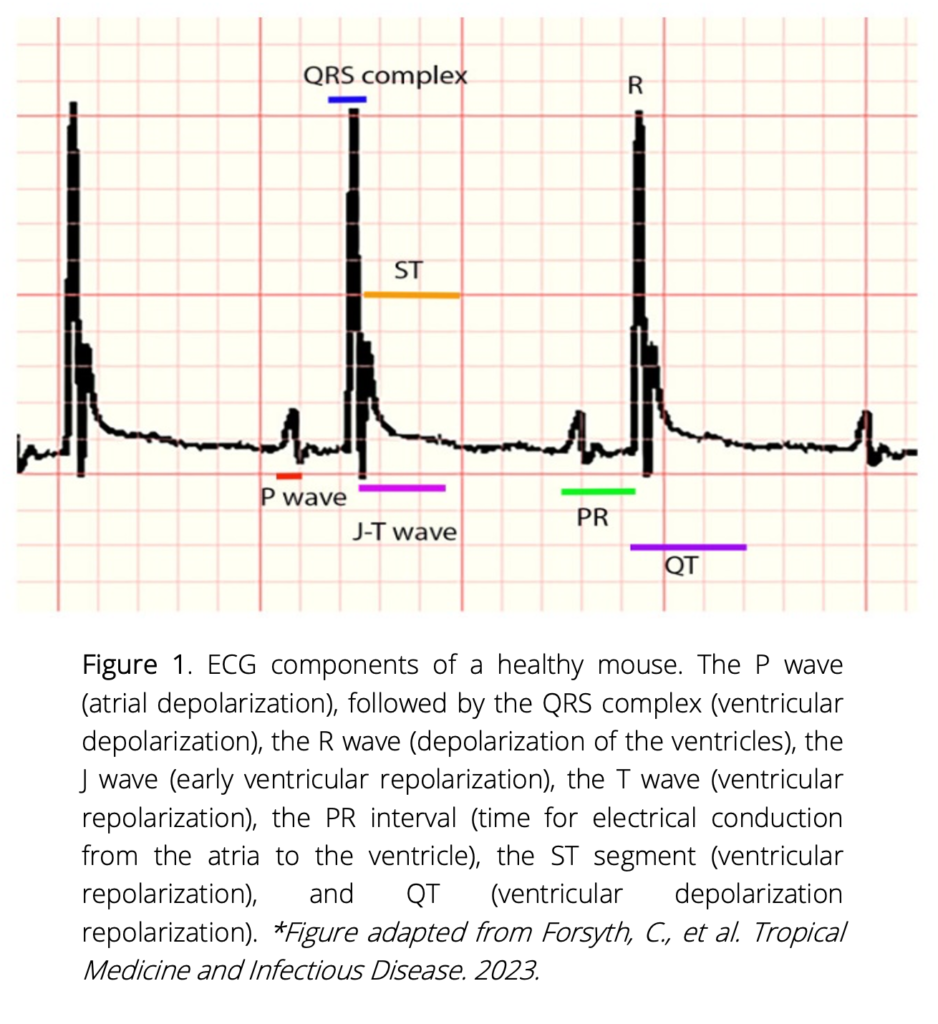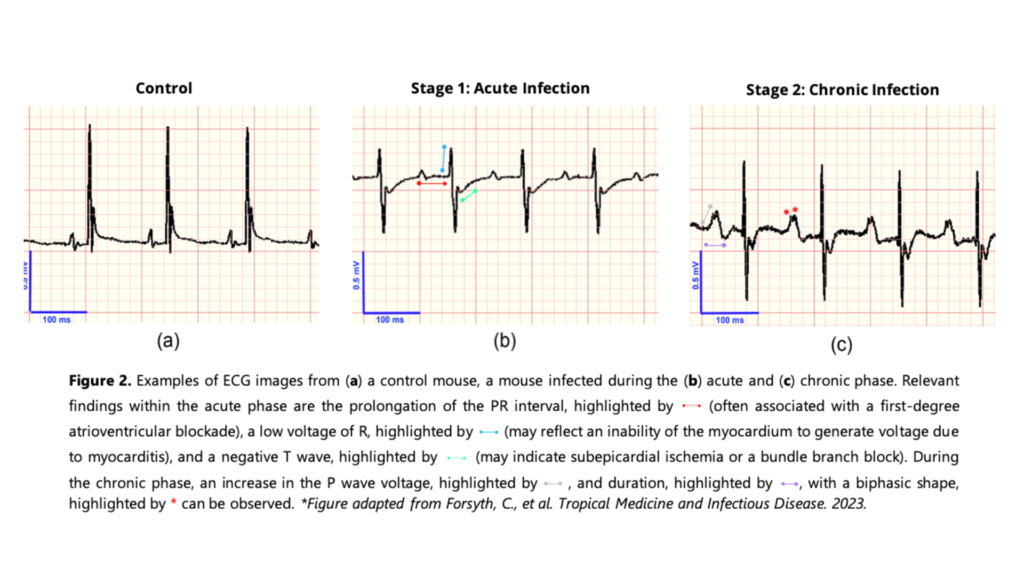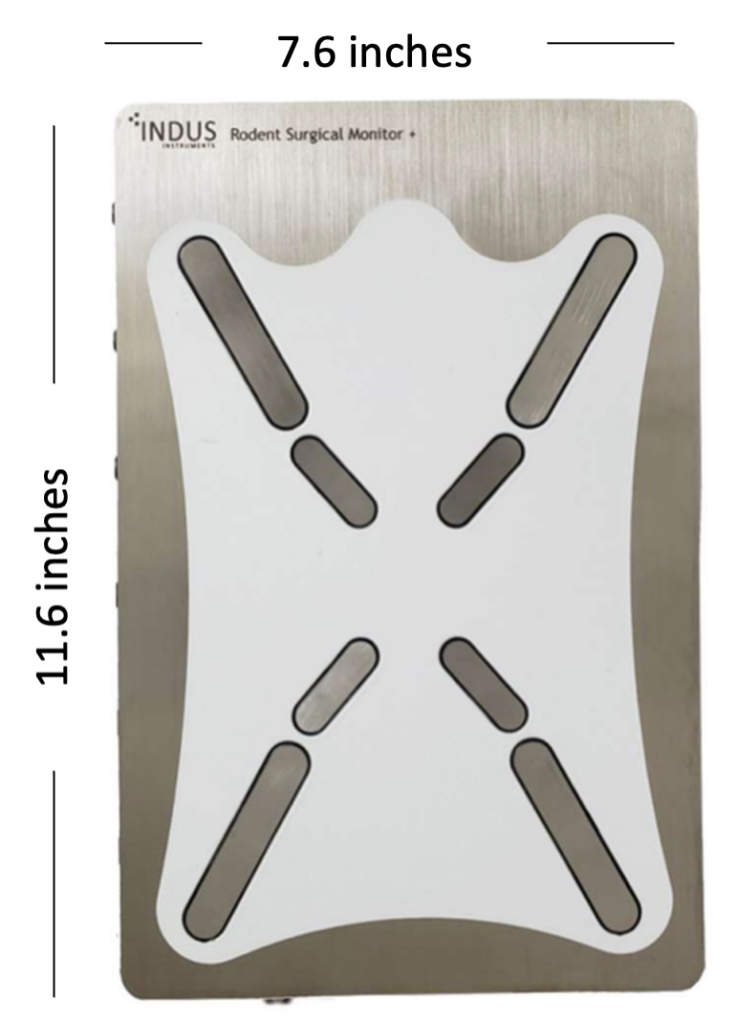M-Series
Overview
Researchers recently showed that Chaga’s disease can be detected and the stage of infection, either acute or chronic, can be determined by evaluating ECG components using machine learning algorithms and the Rodent Surgical Monitor+ (RSM+)1. This disease has two phases, acute and chronic; in the acute phase, the parasite is found in the circulatory system with the patient expressing asymptomatic or with mild flu-like symptoms; however, in the chronic phase, the parasite enters the heart muscle and is estimated that 20 – 30% of infected people will develop severe complications such as electrical conduction abnormalities, arrhythmias, destruction of the cardiac muscle, and progression to heart failure2.
If Chaga’s disease is caught in the acute phase, it can be cured; however, the treatment efficacy diminishes the longer the patient is infected3. Being able to quickly detect and determine the stage of infection using ECG, could be potentially a quick phenotyping tool in locations where this disease is found and where the use of other tests may not be widely implemented or feasible.

Using the Rodent Surgical Monitor+ (RSM+), the researchers monitored ECG Lead II by the non-invasive electrodes built into the surgical platform, a representative ECG of a healthy mouse highlighting the ECG components is shown in Figure 1. The researchers performed an ECG analysis focusing on the duration (ms) and voltage (amplitude in millivolts (mV)) of the ECG components P, Q, R, and S waves, the QRS complex, PR, QT, QTc intervals, and the segments PR and ST as well as the appearance of P, J, and T waves were noted.
The researchers were able to classify control mice vs. mice in the acute phase of infection vs. mice in the chronic phase of the infection from their ECG waveforms with an accuracy of 91.3%. Using their machine learning algorithms, certain ECG components were automatically selected as important indicators, such as the P wave voltage and the increased duration of PR and QTc intervals. This work establishes which ECG component changes are important for the diagnosis of Chaga’s Disease as well as to determine the phase of infection.

Conclusion
The RSM+ is used in this study primarily to monitor ECG Lead II. However, the RSM+ is a heated surgical platform that allows for physiological monitoring of ECG (Lead I, Lead II, Lead III, aVR, aVL, aVF) and respiration via noninvasive electrodes built into the surgical platform. This group focused on ECG differences in T. cruzi; however, others have used the RSM+ to confirm arrhythmias, myocardial infarction, and other abnormal ECG waveforms4–8.
Oxygen saturation, core body temperature, and ventricular or systemic pressures can also be measured. This surgical platform is commonly used with mice, rats, and other small animals, but external ECG leads are available if a larger animal model is used.

Check out the RSM+ website page for more information or contact Scintica Instrumentation if you would like to discuss your specific research needs and how the RSM+ may benefit your group!
To see the imaging systems and lab equipment that we offer, please visit our website (www.scintica.com) or feel free to reach out to us via email at info@scintica.com or by phone at 832-548-0895 and we would be glad to assist you.
References
- Forsyth, C., Cantillo-Barraza, O., Haro, P., Hevia-Montiel, N. & Perez-Gonzalez, J. ECG Marker Evaluation for the Machine-Learning-Based Classification of Acute and Chronic Phases of Trypanosoma cruzi Infection in a Murine Model. Tropical Medicine and Infectious Disease 2023, Vol. 8, Page 157 8, 157 (2023).
- Cantey, P. T. et al. CDC – Chagas Disease – Disease. Transfusion (Paris) 52, 1922–1930 (2019).
- Chagas disease (also known as American trypanosomiasis). https://www.who.int/news-room/fact-sheets/detail/chagas-disease-(american-trypanosomiasis).
- Kelm, N. Q., Solinger, J. C., Piell, K. M. & Cole, M. P. Conjugated Linoleic Acid-Mediated Connexin-43 Remodeling and Sudden Arrhythmic Death in Myocardial Infarction. International Journal of Molecular Sciences 2023, Vol. 24, Page 11208 24, 11208 (2023).
- Arias-Argáez, B. C. et al. Signature of cardiac alterations in early and late chronic infections with Trypanosoma cruzi in mice. PLoS One 18, e0292520 (2023).
- Tan, Y. et al. Nanowired human cardiac organoid transplantation enables highly efficient and effective recovery of infarcted hearts. Sci Adv 9, (2023).
- Hsueh, B. et al. Cardiogenic control of affective behavioural state. Nature 2023 615:7951 615, 292–299 (2023).
